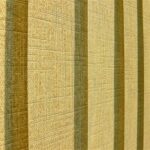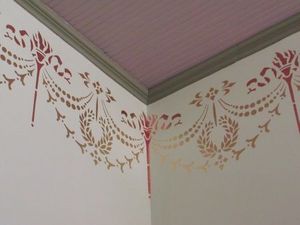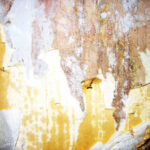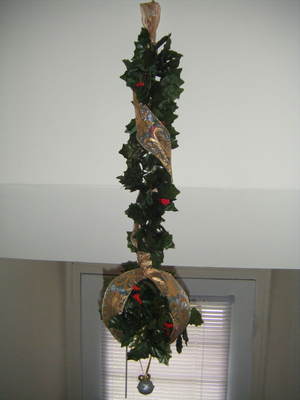If you are a crafty homeowner on a budget, then making your own simple stencils might be an idea you have thought to try before. Stencils, while beautiful and a great alternative to wallpaper, can get pricey. Making your own can help cut costs on your painting projects significantly. Even better, all you need are a few simple materials and a picture printed from the Internet of your desired stencil shape.
Materials needed:
• Plastic Quilting Template (available at fabric and craft stores)
• Sharp craft knife
• Printed clip art in the design of your choice
Start with the desired design for your stencil. You can choose a damask silhouette , words or animals , as referenced in the featured pictures. Decide which design or shape is best for your room or project. You can use these stencils on walls, furniture, canvases or even fabric. If you need to resize your design, use Photoshop or your favorite photo program (Picasa is a free program). Print your design. Tape your print-out to the template plastic on all sides to prevent it from sliding around. Make sure you have a cutting mat underneath (you can use a cutting board here). Using your sharp (the sharper the knife, the more exact your cutout will be) craft knife to cut around the design. Check your craft knife often to make sure it is still sharp otherwise you will have to go back over your cuts. Once you have completed your cuts, pop out the inside of your design. What remains is your completed stencil. Use painters’ tape to apply your stencil to your projects.
Consider the shape and layout of your stencil design when choosing your paint brush. If your stencil features small details or tight areas, a small, tight brush will work best for you. A wider more open stencil is best paired with a large sponge applicator. If you use a brush in wider areas, brush strokes will be more visible. If you get some seepage from under your stencil, use a small brush in the wall color to touch up. You can prevent seepage by keeping your stencil clean and wiping off paint buildup. Dried paint can prevent a flush fit against the wall. Clean and store your stencil flat between uses.
Designs that work well for stencils can be found by using coloring pages , clip art, etc… If you find a design idea that is not printable (wall paper, tablecloths or magazine images), just trace it onto paper instead of printing and follow the steps to complete. Anything works and you will be amazed with the finished project.
For simple shapes, only one stencil is needed but if you want to make a layered, multi-colored or detailed stencil, use a highlighter in several colors to trace which shapes you want on which stencil. When you trace your shapes on to that blank stencil it will be easy to determine which shapes go on which stencil.






